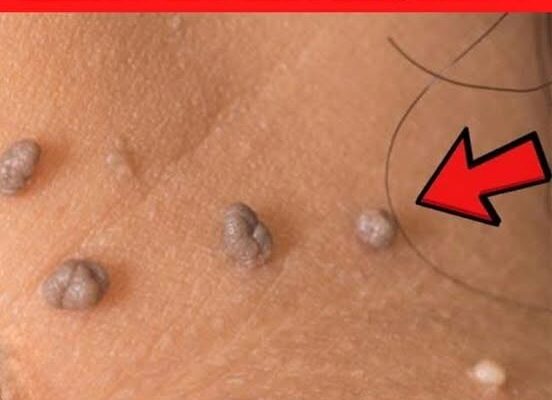Although dermatologists often argue that acrochordons appear in areas where the skin rubs against the skin, this is not the only factor involved. This is because many people whose skin rubs regularly do not develop acrochordons. This indicates that there is something deeper going on inside the body.
Acrochordons and metabolic syndrome
There is a strong correlation between the presence of acrochordons and various metabolic disorders such as metabolic syndrome, insulin resistance, hyperinsulinaemia, prediabetes and type 2 diabetes. If you have several acrochordons, this could be a sign that your body is sending you to warn that your metabolism is in trouble.
Metabolic syndrome includes several conditions such as hypertension, high glucose levels, excess abdominal fat and abnormal levels of cholesterol or triglycerides. All these factors increase the risk of heart disease, stroke and type 2 diabetes.
Risk factors and genetic components
There is a small genetic component in the development of acrochordons. If your family has one, you are slightly more likely to have them as well. In addition, a viral factor may be involved, although this is not yet fully understood.
However, the main cause of acrochordons, especially if they are numerous, remain the metabolic disorders mentioned above. Acrochordons are one of many distress signals that your body uses to prevent you from internal imbalances.
How to treat and prevent acrochordons
Treatment of acrochordons with minor surgical procedures is common, but this does not address the underlying problem. Removing them only treats the symptom, not the cause. To prevent their recurrence, it is essential to correct the metabolic imbalances that cause their formation.
A low-carbohydrate diet, the keto or carnivore diet, or the Atkins and Banting diets, can help to lower blood glucose and insulin levels. These dietary changes can not only help prevent the emergence of new acrochordons, but also eliminate existing acrochordons.
Testimonials and evidence
Thousands of people have seen the disappearance of their acrochordons after adopting a low-carbohydrate diet or a ketogenic diet.
In addition, available studies on PubMed and other specialist journals showed significant links between insulin levels, carbohydrate metabolism and acrochordon formation.
Conclusion
At the end of the day, acrochordons are not just benign protrusions, but a sign that your metabolism may be in trouble. Adopting an appropriate diet can not only help to eliminate these growths, but also improve your overall health.



